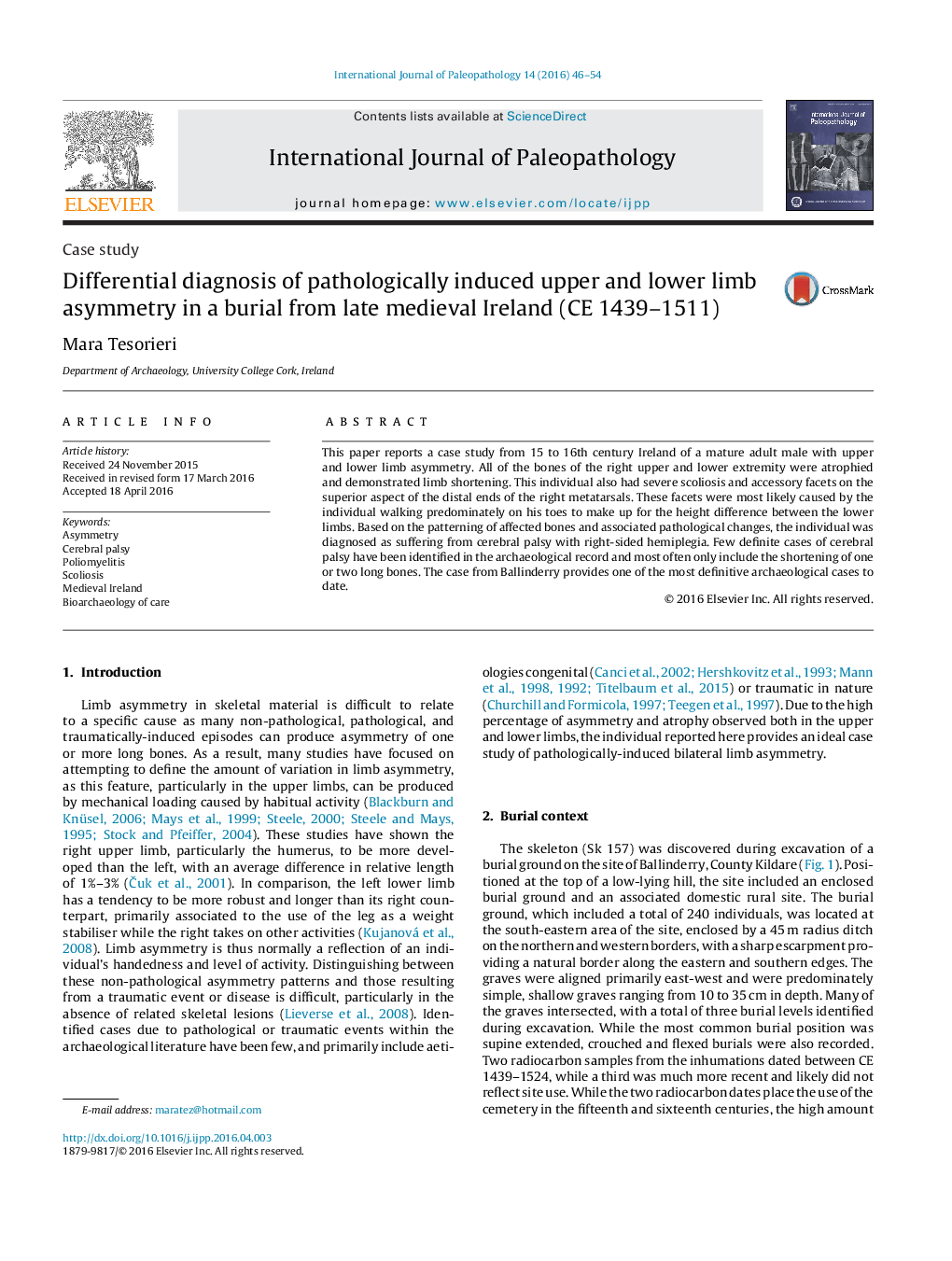| Article ID | Journal | Published Year | Pages | File Type |
|---|---|---|---|---|
| 101294 | International Journal of Paleopathology | 2016 | 9 Pages |
This paper reports a case study from 15 to 16th century Ireland of a mature adult male with upper and lower limb asymmetry. All of the bones of the right upper and lower extremity were atrophied and demonstrated limb shortening. This individual also had severe scoliosis and accessory facets on the superior aspect of the distal ends of the right metatarsals. These facets were most likely caused by the individual walking predominately on his toes to make up for the height difference between the lower limbs. Based on the patterning of affected bones and associated pathological changes, the individual was diagnosed as suffering from cerebral palsy with right-sided hemiplegia. Few definite cases of cerebral palsy have been identified in the archaeological record and most often only include the shortening of one or two long bones. The case from Ballinderry provides one of the most definitive archaeological cases to date.
